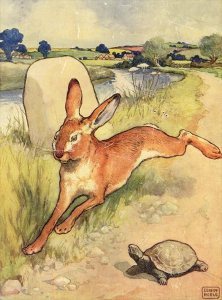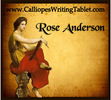Rose Anderson's Blog, page 2
January 26, 2016
Finding fortune in a china cup
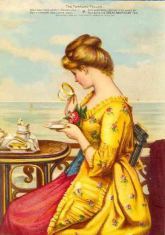 I’ve mentioned before that I was once involved with living history. Our odd hobby began in 1984 and we raised our family in it. At one point, from April to October and just about every weekend we participated in living history events across five states. Oh to have that stamina again!
I’ve mentioned before that I was once involved with living history. Our odd hobby began in 1984 and we raised our family in it. At one point, from April to October and just about every weekend we participated in living history events across five states. Oh to have that stamina again!
One of my fondest memories was tea time. I’d set out my linen and china, my silver spoons and silver service, then invite my colonial lady friends and the occasional colonial gentleman to our camp. I’d brew tea to go with fire-baked shortbread, cobbler, and dried fruits. Our accouterments were the genuine article. You have to have antiques or fine reproductions to portray living history with any degree of authenticity. The goal was always the suspension of disbelief for the public as well as ourselves. I used a special tea called Lapsang souchong — the first black tea in history. And I did more than pour. I read the tea leaves between refills–divining our fortunes in the bottom of our china cups.
For the next few days my symbol series will cover symbols for divination and luck charms.
Mention tea leaves and the first thought that often comes to mind is the Gypsy fortuneteller of old. Scrutinizing sediment in the bottom of drinking vessels is actually an ancient practice that occurred all over the world. This wasn’t done by tea leaves alone. People hunted for patterns in coffee grounds and wine sediments left in their cups too. Why? For the same reason people read horoscopes. I suppose man always wants to know what’s around the bend.
The only things I have left from our living 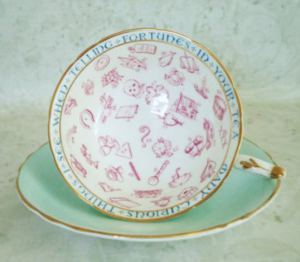 history days are my silver spoons and the old book I learned from. I still read leaves for fun, and to set the mood, use my small collection of vintage bone china teacups specially made for that purpose.
history days are my silver spoons and the old book I learned from. I still read leaves for fun, and to set the mood, use my small collection of vintage bone china teacups specially made for that purpose.
Tea leaf reading is known as tasseography.
Tasse = cup
Graphy = drawing
When the last small sip is left in the teacup, the leaves clump up and form patterns. The patterns have meanings. Example: if the pattern looks like a chicken, expect a chatty visitor.
If you’d like to give tasseography a try you don’t need Lapsang souchong tea. Some tea readers just open regular old black tea teabags and brew their tea as usual. Here are two nice sites with pattern info.
http://readingtealeaves.info/symbols_significations.html
Tomorrow ~ More!
♥♥♥♥♥♥♥♥♥♥♥♥♥♥♥♥♥♥♥♥♥♥♥♥♥♥♥♥♥♥♥♥♥♥♥♥♥♥♥♥♥♥♥♥♥
Words Worth M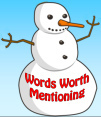 entioning for January
entioning for January
“The life of every man is a diary in which he means to write one story, and writes another. “
~James Matthew Barrie
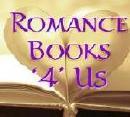 Authors and Industry representatives all month long.
Authors and Industry representatives all month long.
http://romancebooks4us.blogspot.com/
Our January contest is on! Prizes often include $100 in gift cards for Amazon/B&N, ebooks, print books, audiobooks, additional gift cards, and non-book items. http://www.romancebooks4us.com/


January 25, 2016
Blow ye Winds #MondayBlogs
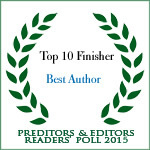
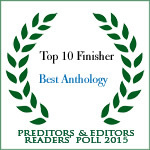 Before I begin today’s installment of my 2016 Symbol Series, I’d like to share some fantastic news. Madeline Archer, my alter ego won the coveted Predators & Editors Top 10 Reader’s Poll for Best Author of 2015! Not only that, Entice Me and Exquisite Christmas (the multi-author anthologies I assembled and saw to print) won two spots in the Top 10 Best Anthologies. I’m tickled pink and very proud.
Before I begin today’s installment of my 2016 Symbol Series, I’d like to share some fantastic news. Madeline Archer, my alter ego won the coveted Predators & Editors Top 10 Reader’s Poll for Best Author of 2015! Not only that, Entice Me and Exquisite Christmas (the multi-author anthologies I assembled and saw to print) won two spots in the Top 10 Best Anthologies. I’m tickled pink and very proud.
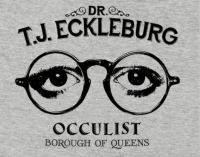 Now I’d like to share an old shame. Back in my high school days I contacted an organization that got books on tape into the hands of the visually impaired. I wanted a specific book, but formats like this weren’t available in bookstores. This was the age of the 8-Track so I figured that’s what I’d get. I had no idea books on tape were really books on reels. It turned out they didn’t have my particular book on a reel, not that I could even play a reel if they had.
Now I’d like to share an old shame. Back in my high school days I contacted an organization that got books on tape into the hands of the visually impaired. I wanted a specific book, but formats like this weren’t available in bookstores. This was the age of the 8-Track so I figured that’s what I’d get. I had no idea books on tape were really books on reels. It turned out they didn’t have my particular book on a reel, not that I could even play a reel if they had.
Assuming I was visually impaired, they offered me braille instead. They also said as the book was a short one, they could also have someone schedule to read to me over the phone. Read to me? To be honest, there was a split second where I considered it, but someone in real need would go without. Feeling sheepish and ashamed of myself, I thanked them for their generous offer and declined. What book could possibly lead me down the dark path of chicanery? The Great Gatsby.
Don’t laugh!
At the time that book was a necessary evil. A thorn in my side. A pebble in my shoe. It was required reading in my English class and I hated it. From the very beginning that story grated on me. I’d find myself reading and rereading the same miserable paragraphs over and over. My brain just couldn’t get into the crazy writing. I mean really, a city divided into East Egg and West Egg? City = Eggs? Who writes like that?? I had no form of reference and a very young and new English teacher who might have explained the concepts better. Let’s just say I wanted to punch ol’ F. Scot Fitzgerald in the nose.
There’s no doubt symbolism in literature creatively enhances the storytelling. But using it like F. Scott Fitzgerald is akin to someone delivering the punchline to a joke and expecting you to instinctively know what the set-up was. After seeing a movie made of the darn book many years later, I came to understand the author’s most dumbfounding metaphoric lines were symbols for concepts. Example: Doctor T. J. Eckleburg’s eyes looking down on the world. Those fading, bespectacled eyes were a metaphor for divine judgement in George’s mind. ::sigh:: Out of all of it, the metaphor that made the most sense was how the weather tied in to everything Daisy Buchanan did or felt. That much was easy.
This week’s portion of the 2016 Symbol Series starts with a hodgepodge of things deliberately used to stand in for a thought. But first, how about that record-breaking weather in the Mid-Atlantic? In the Great Gatsby, Daisey Buchanan forever had a cloud or sunbeam on her frame of mind. Weather symbolized the overall mood. Authors will often use weather and natural phenomenon to convey all sorts of details. I’ve done so more than once. Have you?
Here are a few symbols from the earth and the elements:
Air ~ German Philosopher Nietzsche thought of air as man’s freedom. His writings often refer to air in one form or another (lots of flying through air in Nietzsche’s mind). Shakespeare too used air as a symbol of thought. As breathing creatures, we rely upon air. Now with breathing and thought in mind, how powerful a metaphor is it to have “air” taken away?
Wind ~ Gentle breezes and ill winds generally act as portents signifying that change is on the way. Wind is fleeting and transient. The wind reference often comes in the form of billowing sails that may represent adversity unless a new course is charted. Then it takes on a role of potentiality. If you really want to see wind used to convey a thought, read John Steinbeck’s The Grapes of Wrath.
Dawn ~ Almost always a symbol of awakening. The coming of light is seen as a resurrection. A new day is a second chance.
Night ~ Often associated with secrecy and things hidden under darkness. It can be the flip-side to dawn. Instead of enlightenment, you get ignorance. Nightfall also has sexual and death associations.
Sky ~ The sky broadly represents eternity and references vastness and unlimited possibilities. It also symbolizes heaven and the universe.
Earth ~ Generally a reference for stability and foundation for life. We see “earthy” references that hint at the robust, lusty, or uninhibited. Often used for unrefined, basic, coarse, or crude.
Clouds, fog, and Mist ~ Represent the unseen and often the uncertainty about the future and beyond. Fog rolling in can represent approaching death as well. Fog lifting represents a clarity of thought and the end of indecision.
Water ~ Generally represents life or strength of purpose. Flowing water usually represents change and the passage of time. *see cataclysm
Rain ~ Often symbolizes acts of purification or revelation. Depending upon intensity, it could be revitalizing and life-giving or it can signify complete destruction.
Ice ~ Is often a symbol for things stiff and unyielding. It’s also a nod to frigid: cold and void of love, and emotionally difficult. It can reference the coming of death. To some, ice is the dividing line between the conscious and the unconscious. Dante referenced it for the deepest part of Hell.
Snow ~ Generally represents isolation. Anton Chekov frequently tucked snow into his works for that hopeless thought. Edith Wharton used it that way in Ethan Fromm. Snow, because it’s white, can also signify purity. Melting snow represents the softening of the heart and new beginnings.
Wild weather ~ Hurricanes, twisters, cyclones and tornadoes often have hand-of-god wrath and judgement references.
Cataclysms ~ Floods, earthquakes, volcanoes, tsunami, etc are often the harbingers of change. The end product comes through themes of sacrifice, death and rebirth, baptism and spiritual regeneration.
Lightning ~ Traditional lighting bolts are a symbol of sudden illumination and the destruction of ignorance. Author Bernard Malamud wrote a novel that was later made into a movie about baseball. I haven’t read the novel The Natural, but if the movie is true to the story (which happens to be a modern spin on Homer’s Odyssey) the lightning reference was a divine gift to give the hero the power of inheritance. (To allow his father’s belief in his natural talent pass to him so the hero would believe in himself).
Thunder ~ Generally represent a creative force unfolding (picture Mary Shelly’s Frankenstein). Thunder is often seen as the calling card of the demiurge whether good or evil.
Fire ~Fire is often used to represent passion — it consumes, it burns. Depending upon the context in which it’s used, fire can mean a lot of different things. It can illuminate and warm, but it can also cause destruction, pain, and death. It can also reference rebirth. Example: the phoenix. (This is why I was certain Dumbledore lived.)
Tomorrow~ the 2016 Symbol Series continues
♥♥♥♥♥♥♥♥♥♥♥♥♥♥♥♥♥♥♥♥♥♥♥♥♥♥♥♥♥♥♥♥♥♥♥♥♥♥♥♥♥♥♥♥♥
Words Worth M entioning for January
entioning for January
“We all grow up with the weight of history on us. Our ancestors dwell in the attics of our brains as they do in the spiraling chains of knowledge hidden in every cell of our bodies.”
~Shirley Abbott
 Authors and Industry representatives all month long.
Authors and Industry representatives all month long.
http://romancebooks4us.blogspot.com/
Our January contest is on! Prizes often include $100 in gift cards for Amazon/B&N, ebooks, print books, audiobooks, additional gift cards, and non-book items. http://www.romancebooks4us.com/


January 22, 2016
Because I looked for it #FridayReads
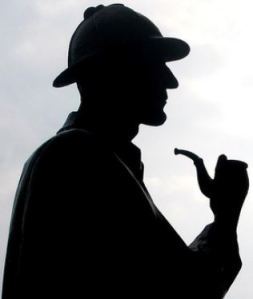 “By George!” cried the inspector. “How did you ever see that?”
“By George!” cried the inspector. “How did you ever see that?”
“Because I looked for it.”
~Sherlock Holmes The Adventure of the Dancing Men
“The world is full of obvious things which nobody by any chance ever observes.”
~Sherlock Holmes The Hound of the Baskervilles
“Education never ends, Watson. It is a series of lessons, with the greatest for the last.”
~Sherlock Holmes His Last Bow
It’s just as well the older I get, the more blank pages turn up in my mental vault. Knowledge grows exponentially and I need room for all the new info! My novels are works of fiction but they couldn’t be more true in their details. My facts are solid. A little known fact of me — my head is full of facts from reading the entire 1985 World Book Encyclopedia. (The task took me approximately six years.)
Another fact of me — I was raised in market research. My family business introduced companies to the benefit of both. In order to do that we needed to know what those companies needed, and that required research. I was deep in research at a young age and I still love it. Research equates to treasure hunting for me. Combine reading the encyclopedia with penchant for research and what do you get? You get a very busy mind with one fertile imagination. Fact-wise, when I write, the only thing I take liberty with is how I stitch those facts together. I enjoy when authors take the time to write a believable story, even if that story is about a werewolf.
One way to craft a believable story is to include those things people understand intrinsically. Like body language.
Today’s post wraps up those telltale body symbols we do on purpose or display subconsciously.
Sucking in the belly – look at me
Chest back, belly out – you’re uncomfortably close to me, back off
Rubbing belly – seeking comfort
Rubbing belly – (situational – pondering or having uncomfortable thoughts)
Thrusting hips – provocative, overtly sexual
Hips drawn back – uncomfortable, protecting the vulnerable spot
Hips sideways – (situational – a subtle indication of what you really want)
Swaying hips, sashay – suggestive sexual display
Hands on hips – waiting
Hands on hips, stance wide – growing impatience
Hands on hips, elbows wide – (situational, could mean aggression)
Cupping hand gesture – the topic needs extra care
Gripping hands – possessiveness, ownership
Holding your own hands – seeking comfort
Wringing hands – extreme nervousness, woe
Fist in hand – repressed anger
Hands wrapped around a mug etc – self-comfort
Hands clenched thumbs up – pleasure
Cupped hand weighing gesture – evaluation
Fingers curled, thumbs inside – seeking comfort
Hand out sideways – greeting
Laced fingers propping chin – thinking, listening
Laced fingers behind head – carefree, evaluation
Drumming fingers – impatience
Finger tracing a circle at the temple – he’s nuttier than a squirrel!
Index finger to thumb, other fingers out – it’s ok, all is good
One finger in the air – (Situational – seeking attention or having a point)
Hand with/without one finger in air, arm raised – attention, pick me!
Finger tapping temple – (Situational – think about it, he’s touched in the head!)
8 fingertips on the mouth – received shocking news
Hiding hands – (Situational – lying, concealing, I don’t care to talk, I want to listen to you)
Hand on face, middle finger over mouth – evaluating
Steepled fingers – (Situational – thinking, superiority, confidence)
Rubbing hands together – (Situational – cold, plotting, excitement, anxious to get going)
Palms flat together – prayer, contemplation
Hand massage – stress, anxiety
Palm(s) up – (Situational – beseeching, asking for help greeting, nothing to hide)
Fiddling fingers – expelling tensile energy
Handshake, simultaneous arm grip – dominance
Firm handshake – display of strength, alpha move
Handshake, quick withdrawal – submission, discomfort
Finger point – that way!
Fist pound into palm – rage
Snap – like that! That fast! In an instant
Clapping hands – approval
Sharp clap – attention getting
Thumbs up – it’s ok, liked
Thumbs down – it’s not ok, disliked
Thumb jerk over shoulder – that way!
Finger slash over throat – your dead, it’s dead, it’s done
Palm out – Stop I’ve heard enough, interrupt
Side hand chop – It’s done! Enough!
Wave – helloooo
Wave off – dismissive
Wave to – come here!
Hand shaping – hands forming words as you speak them, sincerity
Butt thrust – sarcasm as in kiss my….
Butt thrust with patting – insult as in kiss this
Butt thrust, mooning – disregard
Butt wiggling – overt sexual display
Butt sway – look at me, I’m hot
Butt patting – you want me
Thighs widen – conscious or unconscious sexual invitation
Thighs tight together – self-protection
Swinging legs – delight, tensile energy – usually sexual
Crossing legs – (situational – at ease, self-control, defensive)
Hands on thighs – I’m ready to go
Hands on inside thighs – unconscious desire
Both hands on thighs elbows out sideways – equal to hands on hips – (situational – impatience or aggression)
Thigh slap – motivational gesture
Thigh drumming – (situational – boredom, impatience, excitement)
Bouncing thigh(s) – focusing or impatience
Touching or stroking the knee – sexual tease
Balled fists on knees – anger
Foot point – works like a finger point
Parallel feet pointing at someone – you have my full attention
Curling toes – (Situational – frustration, fear, excitement, pleasure or anxiety)
Foot tap – impatience
Toes pointing inward – (Situational – introspection, awkwardness, defensiveness
Foot stomp – seeking attention, rage, tantrum
Foot swinging – focus, expelling nervous energy
Tilting back on balls of feet – contemplative, made a decision
Bouncing on toes – exuberance
I’m sure if you were to think about it, you’d come up with even more.
My personal well is dry!
Monday: Different symbols
♥♥♥♥♥♥♥♥♥♥♥♥♥♥♥♥♥♥♥♥♥♥♥♥♥♥♥♥♥♥♥♥♥♥♥♥♥♥♥♥♥♥♥♥♥
Words Worth M entioning for January
entioning for January
“Attitude is a little thing that makes a big difference.”
~Winston Churchill
 Authors and Industry representatives all month long.
Authors and Industry representatives all month long.
http://romancebooks4us.blogspot.com/
Our January is on! Prizes often include $100 in gift cards for Amazon/B&N, ebooks, print books, audiobooks, additional gift cards, and non-book items. http://www.romancebooks4us.com/


January 21, 2016
You see, but you do not observe #IndieThursday
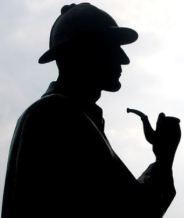
“You know my method. It is founded upon the observation of trifles.”
~Sherlock Holmes ~ The Boscombe Valley Mystery
“You see, but you do not observe. The distinction is clear.”
~Sherlock Holmes ~ A Scandal in Bohemia
As part of my 2016 symbol series, I’m continuing on with yesterday’s body language post. (scroll down for the previous posts to learn more). As mentioned yesterday, we give physical clues to what we’re feeling. Not only do we do this all the time, we do it consciously and unconsciously. Our body language is filled with these symbols and most are universal. The more wide-spread it is, the older it is. One of the oldest is the head nod we interpret as yes and the head shake we interpret as no.
Yesterday we went head to collar. Today we’ll starting at the neck:
Covering the neck with the hand – disturbed or fearful
Slow palm stroke down the front of the neck – uncomfortable
Massaging the neck – indicates tension or anxiety
Massaging the neck – (situational – desire, weary)
Exercising the neck – boredom
Sudden front neck-grab – shock or surprise
Grabbing the back of the neck – a displacement activity for anger
Shrug – I don’t know or indifference
Shrug with arms up – I don’t know, I tell you!
Quick slight shrug – lying or lack of understanding
Slow animated shrug – aggression or disregard
Chest in profile – sexual overtone
Chest thrust – I’m tough, look at me
Sunken chest – meek, don’t hurt me
Chest leaning, crossing into the other person’s space – aggression
Touching your chest – highly suggestive and flirtatious
Breathing:
Slow deep breath – buying time, thinking
Shuddering breath – overwhelmed, forgot to breathe
Gasp – surprise
Cough – skeptical
Panting – excited, exertion
Choke – stunned, disbelief
Turning your back – (situational male. Belittling. You’re no threat to me)
Hunched shoulders – feeling cold or fear
Hunched shoulders ducked head – fearing attack
Hunched shoulders forward head – wishing to hide
Shoulders back – fearless or taunting
Shoulders back, back up against a wall – desire to remain unseen
Shoulder on the wall – relaxed
Shoulder on the wall with ankles crossed – carefree
Shoulder half turning away – disinterest or uncomfortable with the topic
Arms held firmly to the sides – deception
Arms thrown in the air – exasperation
Arms in motion during conversation – excitement
One arm suddenly thrust in the air – I have no idea! Sarcasm: That’s just great!
Forearm up to face with head-ducking – self-protection
Crossed arms – can be situational, as in feeling cold
Crossed arms, shoulders tense – wary and feeling vulnerable
Crossed arms – self-protection, feeling vulnerable and uncomfortable
Crossed arms hug – seeking comfort
Crossed arms with shoulder on wall – waiting and growing impatient
Crossed arms, balled fists – restraint (or situational – my hands are cold)
Crossed arms, hands in armpits – cold
Crossed arms, shoulder on wall, crossed ankles – judgmental
Crossed arms, shoulder on wall, crossed ankles, balled fists – intolerant and ready to
fight
Crossed arms, turn away – hurt feelings
One hand on arm or shoulder – I want to be friends with you
Reaching out – seeking comfort
Reaching out situational – I want to throttle you!
Reaching out, pulling back sharply – defensive
Arms back – hiding something
Arms back exposing torso – (situational – submissive or over confident)
Elbow jab – get out of my way!
Propped on elbows – listening
That’s just the tip of the iceberg. I’d planned to take it all the way to the toes, but every time I assumed I was done, I though of another! We humans sure say a lot when we keep our mouths shut. Writers often color their stories with these little actions. I certainly do.
Tomorrow: More
♥♥♥♥♥♥♥♥♥♥♥♥♥♥♥♥♥♥♥♥♥♥♥♥♥♥♥♥♥♥♥♥♥♥♥♥♥♥♥♥♥♥♥♥♥
Words Worth M entioning for January
entioning for January
“I have always a sacred veneration for anyone I observe to be a little out of repair in his person, as supposing him either a poet or a philosopher.”
~Jonathan Swift
 Today is Author Renee Vincent’s blog day
Today is Author Renee Vincent’s blog day
http://romancebooks4us.blogspot.com/
Authors and Industry representatives all month long.
Our January is on! Prizes often include $100 in gift cards for Amazon/B&N, ebooks, print books, audiobooks, additional gift cards, and non-book items. http://www.romancebooks4us.com/


January 20, 2016
Elementary, my dear… #WriterWednesday
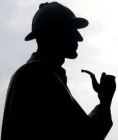 “By a man’s finger nails, by his coat-sleeve, by his boot, by his trouser knees, by the callosities of his forefinger and thumb, by his expression, by his shirt cuffs — by each of these things a man’s calling is plainly revealed. That all united should fail to enlighten the competent enquirer in any case is almost inconceivable.”
“By a man’s finger nails, by his coat-sleeve, by his boot, by his trouser knees, by the callosities of his forefinger and thumb, by his expression, by his shirt cuffs — by each of these things a man’s calling is plainly revealed. That all united should fail to enlighten the competent enquirer in any case is almost inconceivable.”
~Sherlock Holmes A Study in Scarlet
:) I love Sherlock in all his iterations.
Our lives are filled with symbols. Literally filled. Take the simple nod and the shaking of the head. Early on we recognize these gestures as meaning yes and no. Sociologists (who study human social behavior) call these simple body gestures symbols of communication. The interesting thing about those two ancient symbols for yes and no is they’re nearly world-wide in understanding. That shows you how truly old they really are. Of course I understand them as a human. Even toddlers know the gestures for yes and no. Beyond my basic human comprehension, it’s the writer in me that sees potential in the fact non-verbal cues happen consciously and subconsciously. Just knowing that puts my mind in Sherlock mode. As Sherlock Holmes would say, “Give me details!” The literary world is full of body language — from pacing and nervous twitches to head-scratching perplexity and come hither glances. I could go on. So I will!
Body language from head to collar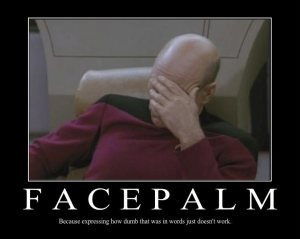
I started this post with the idea of doing a head to toe run-down of gesture symbology. But after composing all of the following, I saw dozens more in my mind. I’ve decided to list just those head to collar cues today. I’ll post more in the days to come.
Sherlock would deduce broader information in the following body language. What do you see?
Head tilt – interest
Prolonged tilt – boredom or impatience
Head in hand – boredom or focus
Head in two hands – overwhelmed or listening with deeper focus
Head bowed, eyes raised – coy invitation
Head clasping, elbows high – wondering what to do next
Hair twirling or fiddling – insecurity, lack of confidence, sexual overtones
Hair tossing – look at me!
Hair pulling – frustration
Brow furrowing – a moment of confusion or deep thought
Brow raising – astonishment
Brow flick – acknowledgment or greeting
Forehead slap – sudden understanding
Face palm – exasperation
Face to face – sincerity or aggression
Knitted brows – anxiety
One brow raised – doubt
Fingertip to the temple – contemplation
Blinking – disbelief or astonishment
Dilated pupils – desire
Narrowing eyes – doubt or suspicion
Rubbing the eyes – doubt
Wide eyes – surprise
Eye rolling – exasperation
Eye crossing – fed up
Side eye – wary
Long eye closing – stop what you’re saying
Wincing – embarrassment or revulsion
Blank stare – unable to follow the thought
Looking down – embarrassment
Looking away – discomfort
Eye to eye – sincerity
Doe eyes – desire
Wink – share a secret
Eye batting – you want me don’t you?
Fluttering blink – nervous or aroused
Prolonged eye contact – sexual attraction
Head to toe perusal – overtly sexual – I like what I see
Rubbing the point between the eyes – weary or negative evaluation
Eyebrow fiddling – contemplating
Ear folding or tugging – Indecision
Nose wrinkling – something distasteful
Pinching the nose – distasteful as in that stinks
Rubbing the nose – you don’t like it
flared nostrils – excitement: positive or negative
Sharp sniff – displeasure
Finger to the side of the nose – keep the secret
Hand to cheek – evaluation
Inflating cheeks on a breath – buying time to decide
Lip licking – enjoyment
Lip worrying (biting) – anxiety
Finger to lip – enjoyable thoughts
Thrusting lip – a pout
Pursed lips – contemplative or annoyed
Finger to lip tapping – thinking and deciding
Tight lips – annoyance
Lip twitch – suppressed humor
Smile – happy
Frown – disturbed
Tongue poking – deep concentration
Sticking out the tongue – cheeky petulance
Running a tongue over the lips – potential enjoyment or I want you
Clenched teeth – anger
Baring teeth – aggression
Teeth tapping together – thought in process
Teeth tapping with fingernail – boredom
Yawn – tired or bored
Clenching jaw or jaw tic – suppressed anger
Jaw drop – stunned
Biting inside of cheek – holding back
Grimace – regret
Scowl – deep negativity
Stroking chin – thinking or making a decision
Thrusting chin – obstinate
A neck scratch in conversation – lying
Massaging the neck – working a problem or a show of attraction
Pulling collar – I’ve been found out
Holy cow. And that just involves the head! There are so many ways to silently communicate, I’m sure I’ve missed some. Other nonverbal gestures involving hands and body stances say even more. That these symbols of nonverbal communication have universal understanding proves just how ancient they are. Perhaps they trace back to a time when the earliest humans didn’t use words.
I say universal because this communication is recognized all over the world. That said, there are places in the world where cultures just do them a little differently. For example: your A-Ok or thumbs-up hand gesture would be taken as an insult akin to flashing your middle finger. Oddly, there are also cultures where your nod means no. In Korea, you must be careful how you smile. As ancient as they are, I wonder how these non-verbal communication anomalies came to be.
Intentional gestures~
http://lifeprint.com/asl101/pages-layout/concepts.htm
http://www.koko.org/sign-language
:D
Tomorrow: More
♥♥♥♥♥♥♥♥♥♥♥♥♥♥♥♥♥♥♥♥♥♥♥♥♥♥♥♥♥♥♥♥♥♥♥♥♥♥♥♥♥♥♥♥♥
Words Worth M entioning for January
entioning for January
“When I no longer thrill to the first snow of the season, I’ll know I’m growing old. “
~Lady Bird Johnson
 Romance Books ‘4’ Us
Romance Books ‘4’ Us
http://romancebooks4us.blogspot.com/
Authors and Industry representatives all month long.
Our January is on! Prizes often include $100 in gift cards for Amazon/B&N, ebooks, print books, audiobooks, additional gift cards, and non-book items. http://www.romancebooks4us.com/


January 19, 2016
Rainbow Writing #IndieTuesday
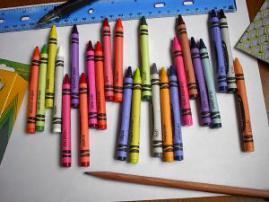 I have a dream that my four little children will one day live in a nation where they will not be judged by the color of their skin, but by the content of their character.
I have a dream that my four little children will one day live in a nation where they will not be judged by the color of their skin, but by the content of their character.
~Martin Luther King, Jr.
If only. The world would certainly be a better place if color enhanced rather than divided. Even though human DNA emphatically proves the differences between race is literally skin deep and nothing more, shades of skin can hold over-important meaning. The pendulum regarding color bias swings wide and not only both ways, but all ways. People even take issue with hue within their own races. Example: in some parts of the world people born with albinism are killed for their body parts.
I’ll add redheads to this human color spectrum bias. Genetically speaking, recessive gene redheads are rare with 1 redhead born in every 1000 births. They come in their own rainbow from pale strawberry blond to deep Irish setter red and even darker auburn. Skin tones come in a wide array too, from tissue-paper translucent to tawny. As for me, I’m a pink-skinned, 90% freckle-less, natural redhead with hair the color of a golden retriever.
:D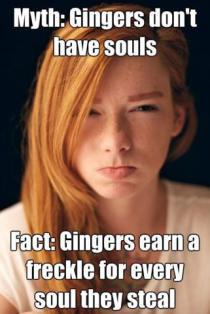
Did you hear the one about the redhead convention?
The punchline: Not a soul attended.
lol As the joke goes, gingers have no souls.
Historically, redheads were both coveted and feared and it had nothing to do with lack of soul. A lot of latent redheaded genes are found in the middle east today because redheads were once collected for harems. Redheads were also burned as witches. Why? It was all about coloring. But what if the dividing factor in the world wasn’t skin color at all, but eye color? How about “outie” vs. “innie” belly buttons, free or attached earlobes, or Roman vs. round noses? Surely if you’re following whatever criteria exists that says one skin color is better over another, these things must be as divisive as well. Put like that, it’s crystal clear that color bias doesn’t make sense.
There’s more to color than what meets the eye. This includes symbolism!
Carl Jung, psychiatrist and founder of analytical psychology, was a big proponent of art as therapy. He believed color choices held deeper insight about true personality traits, and felt his patients could better understand their psyche if they used color. Testing this he discovered surprising predictability. More times than not it went like so:
Extroverts chose red. Introverts chose blue. How interesting is that?
Whether we are aware of this or not, we’re well-acquainted with colors as symbols for personality traits and emotions. Writers certainly are. How often do our characters metaphorically see red with rage, turn yellow in fear, turn white as a ghost, or go green with envy? How fun to insert colors into scenes to hint at the emotion in that moment. It could be something small, like a red wine stain on a table cloth is noticed just before an argument ensues. Or the sunset out the window could be banded in purple just before your character’s audience with the king. If you read my writings with an eye to such things, you’d see a rainbow.
Color Symbolism~
Red: all things intense and passionate ~ excitement, energy, passion, love, desire, strength, power, heat, aggression, danger, fire, blood, war, violence, sincerity, and happiness.
Yellow: jealousy, joy, happiness, betrayal, optimism, idealism, imagination, hope, sunshine, friendship, summer, dishonesty, cowardice, illness, covetousness, deceit, and caution.
Green: nature, vigor, youth, good for the environment, healthy, good luck, renewal, spring, generosity, fertility, or jealousy, inexperience, envy, and misfortune, .
Blue: Peace, sky, water, tranquility, cold, calm, stability, harmony, unity, trust, truth, confidence, conservatism, security, cleanliness, order, loyalty, and depression.
Purple: Royalty, nobility, mourning, spirituality, ceremony, mysterious, transformation, wisdom, enlightenment, honor, arrogance, and temperance.
Orange: demanding of attention, vibrant, energy, balance, enthusiasm, warmth, and flamboyance.
Brown: earthy, stability, hearth, home, outdoors, reliability, endurance, simplicity, and comfort.
Black: sexuality, sophistication, elegance, wealth, mystery, fear, evil, unhappiness, depth, style, sadness, remorse, anger, anonymity, detachment, underground, good technical color, mourning, death, austerity, power and powerful.
Gray: security, reliability, intelligence, staid, modesty, dignity, maturity, solid, conservative, practical, old age, sadness, boring, and calm.
White: purity, birth, sterility, virginity, reverence, simplicity, cleanliness, peace, humility, precision, innocence, youth, winter, snow, good, marriage, death, and cold.
Aquamarine: water.
Pink: love and romance, caring, tenderness, and acceptance.
Lavender: mourning, femininity, grace, and elegance.
Beige: unification and simplicity.
Ivory: pleasantness.
Tomorrow: More symbols
♥♥♥♥♥♥♥♥♥♥♥♥♥♥♥♥♥♥♥♥♥♥♥♥♥♥♥♥♥♥♥♥♥♥♥♥♥♥♥♥♥♥♥♥♥
Words Worth M entioning for January
entioning for January
“I prefer winter and Fall, when you feel the bone structure of the landscape — the loneliness of it, the dead feeling of winter. Something waits beneath it, the whole story doesn’t show.”
~Andrew Wyeth
 Today is Author Sharon Hamilton’s blog day
Today is Author Sharon Hamilton’s blog day
http://romancebooks4us.blogspot.com/
Authors and Industry representatives all month long.
Our January is on! Prizes often include $100 in gift cards for Amazon/B&N, ebooks, print books, audiobooks, additional gift cards, and non-book items. http://www.romancebooks4us.com/


January 18, 2016
Set in Stone #MondayBlogs
 Continuing on with my 2016 symbol series. Today’s topic: Victorian funerary symbolism.
Continuing on with my 2016 symbol series. Today’s topic: Victorian funerary symbolism.
Burial symbology has been around for about as long as there have been burials. A recent discovery of a 12,000 year old shaman’s grave suggests this woman had a greater connection to the afterlife. It’s hard to miss the symbology in the archaeological remains of Ancient Egypt with its detailed embalming rituals and astounding tombs. Comparatively speaking, our western cemeteries aren’t nearly as grand. But I think they’re impressive in their own right.
I like old cemeteries for their history but also for the love left there. I was born and raised in Chicago where the oldest cemeteries are these amazing monument parks dedicated to love. Chicago, a long-time hub of trade and commerce, had more than its share of well-heeled Victorian industrialists and financiers– people who did it up large in both life and death. Many well-known Chicagoans of the past are buried in Rosehill cemetery.
On the National Register of Historic Places, Rosehill is one of the most impressive of all the Victorian cemeteries found around the city. Here, beautiful and ostentatious monuments and tombs sit amid small, very old oak trees. Off topic but interesting enough to mention briefly, those oak trees are actually hundreds of years old. They’re thin-trunked and stunted by the sandy, nutrient-poor soil of Lake Michigan. You’d never know they’re ancient trees to look at them.
Ok, back on point…
Old Victorian
cemeteries are filled with symbolism.
Queen Victoria was a trendsetter throughout her long reign and the Victorian era’s death fixation originates with her. After husband Prince Albert died, the remaining 40 years of her life was one long and sad mourning period. Because everything she did was emulated, death and loss became in vogue. Death was both fashion statement and artistic expression. Victorian cemeteries like Rosehill are true to this Victorian eccentricity. Most are beautiful tributes to love and loss.
Stories in stone
Many years ago my husband and I volunteered to care for a small abandoned cemetery not far from where we once lived. Small forgotten plots dot the American countryside and often don’t have the resources for their care as larger cemeteries do. Vandalism and neglect take their toll. As stewards, our job consisted of mowing and trimming around the headstones. In the process, we discovered an unknown, un-inventoried 1870s grave covered over by time and turf. The old limestone headstone had a beautiful poem about the deceased and this was accompanied by a base relief of a woman’s hand in the act of pouring water from a pitcher. I clearly saw symbolism on the stone, but this was long before personal computers or the internet. I had no ready resources at the time to explain the meaning behind the pouring pitcher. My small town library had nothing on the shelves to explain it either. Info hound that I am, it gnawed at me that I didn’t know. lol
Have you ever walked a cemetery and wondered about that stone lamb or concrete tree stump? What’s with the sculptured hands, beehives, weeping willows, and burning torches? These symbols tell us stories if we stop to read them. They offer a fascinating glimpse into the eccentric and ostentatious time period known as the Victorian era. Learn how to read them and you’ll discover those people’s lives in microcosm.
The following links will help you read the small stories that head stones, crypts, and monuments tell. Fascinating stuff.
:D
http://www.thecemeteryclub.com/symbols.html
http://www.graveaddiction.com/symbol.html
If you’re interested in becoming a cemetery steward, your local historical society can get you involved. Here’s a site devoted to grave preservation: http://saveagrave.net/
Headstone Rubbing How-to:
Thin quilter’s muslin works better than paper. So does Pellon interfacing. Blue painter’s tape won’t damage the stone. Melt some crayons and pour in a paper cup to harden to get yourself a nice large crayon hockey puck to work with. Rub gently, the image will eventually darken. Be extra careful not to get wax on the stone and be sure to clean up after yourself. Here’s a video example:
Tomorrow: More symbols
♥♥♥♥♥♥♥♥♥♥♥♥♥♥♥♥♥♥♥♥♥♥♥♥♥♥♥♥♥♥♥♥♥♥♥♥♥♥♥♥♥♥♥♥♥
Words Worth M entioning for January
entioning for January
“Many useful and valuable books lie buried in shops and libraries unknown and unexamined, unless some lucky compiler opens them by chance, and finds an easy spoil of wit and learning.”
~Samuel Johnson, 1760
 Today’s guest ~ Anna Durand
Today’s guest ~ Anna Durand
http://romancebooks4us.blogspot.com/
Authors and Industry representatives all month long.
Our January is on! Prizes often include $100 in gift cards for Amazon/B&N, ebooks, print books, audiobooks, additional gift cards, and non-book items. http://www.romancebooks4us.com/


January 15, 2016
Name that time
Few people in history actually define an era or period in time. Napoleon did briefly with his Napoleonic period. But the regnal eras, those dynastic periods defined by the reign of a king or queen, are the ones that stick. Eras defined as Tudor, Elizabethan, Jacobean, Caroline, Georgian, Regency, and Edwardian, all have things about them that draw immediate images in our minds. As a long-time living history presenter, I see clothing styles first. Then I see the rest…
For the Tudor period, I picture Henry VIII of course, but I also see architecture. Elizabethan fills my head with theater. Jacobean gives me images of Guy Fawkes and musketeers. The Caroline era comes to me in the form spaniels! (King Charles spaniels specifically). The Georgian era puts redcoats and revolution in my mind. Regency calls up empire dresses and Mr. Darcy. Mmm Darcy. And the Edwardian era comes to me with women’s suffrage and germ theory, not to mention it ushers in mechanized warfare. Did you notice which era is missing from that list?
Hint #1: a long-running period utterly defined by one woman.
Hint #2: She had a HUGE family.
Hint #3: Her era fell between Georgian and Edwardian. From 1837 to 1901.
Yes, I’m speaking of Queen Victoria and the Victorian era. It had quite a long run because she was queen a long time. In that span, so many things were credited to her –too many for this post.
The reason I mention Queen Victoria is because a lot of symbols come out of the Victorian era. In fact, Victoria herself was a symbol of British imperialism and pride. Because there are just so many, I’m going to devote a few posts to it. I often use Victorian symbolism to add depth to my historical writings.
For today, I’ll start with…
The symbol of flowers during Victoria’s reign.
 Flowers adorned just about everything in the Victorian era. Decor-wise, it was an extremely busy time for the eye. Flowers decorated every other inch of people’s lives, and men’s and women’s clothing and jewelry sported all manner of florals too.
Flowers adorned just about everything in the Victorian era. Decor-wise, it was an extremely busy time for the eye. Flowers decorated every other inch of people’s lives, and men’s and women’s clothing and jewelry sported all manner of florals too.
This site has an impressive list of 371 Victorian flowers and their symbology. If you write historical fiction, this is a fantastic reference site with more info than flowers:
http://www.victorianbazaar.com/meanings.html
Monday: a bit more.
♥♥♥♥♥♥♥♥♥♥♥♥♥♥♥♥♥♥♥♥♥♥♥♥♥♥♥♥♥♥♥♥♥♥♥♥♥♥♥♥♥♥♥♥♥
Words Worth M entioning for January
entioning for January
“And there is quite a different sort of conversation around a fire than there is in the shadow of a beech tree. Four dry logs have in them all the circumstance necessary to a conversation of four or five hours, with chestnuts on the plate and a jug of wine between the legs. Yes, let us love winter, for it is the spring of genius.”
~Pietro Aretino
 Today is Author Suz DeMello’s blog day
Today is Author Suz DeMello’s blog day
http://romancebooks4us.blogspot.com/
Authors and Industry representatives all month long.
Our January is on! Prizes often include $100 in gift cards for Amazon/B&N, ebooks, print books, audiobooks, additional gift cards, and non-book items. http://www.romancebooks4us.com/


January 14, 2016
Comparing one’s temperament to the moon
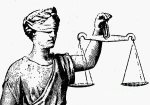 Have you ever wondered about the spark, the impetus, that drove the first human to scratch a line and say this represents such-and-such? Think about it. I’ll venture a guess and say tally numbers came first because tally sticks marking moon cycles have turned up in prehistoric caves.
Have you ever wondered about the spark, the impetus, that drove the first human to scratch a line and say this represents such-and-such? Think about it. I’ll venture a guess and say tally numbers came first because tally sticks marking moon cycles have turned up in prehistoric caves.
We once watched a documentary about a missing kingdom in Ancient Egypt. In a nutshell, the search turned up many unidentifiable clay tablets covered in unknown cuneiform writing. The archaeologists were desperate to find one readable text that would act like the Rosetta Stone. When they eventually found such a tablet, all fell in to place.
Looking at cuneiform, it seems all too similar to me with its little dashes and triangular stabs pointing this way and that. I can’t help thinking it must have been difficult to memorize. I imagine every student in China would laugh at me for saying that. With an astounding 45,000 different characters, the Chinese writing system isn’t an alphabet as we know alphabets, rather entire words in symbol form. It’s said one only need to memorize about 3000-4000 to be proficient in reading Mandarin. Is that all? I like our 26 letters of the alphabet. I like our R’s and S’s. I’m comfortable with our W’s and Q’s. Other languages have such fun-looking alphabets. Russian and Turkish comes to mind. Belarusian and Greek as well.
Just sharing a thought there — a wordy morning ramble launched on a half-cup of coffee. Anyway…
Yesterday I began this portion of my symbol series with allegory (scroll down to read). As far as symbols found in literature goes, you can’t examine the topic of allegory without touching upon Extended Metaphor.
A metaphor is a figure of speech that uses two very different concepts, or two concepts that are not connected in any way, to draw a comparison between the two.
This explanation went on to use the moon to illustrate the broader concept of the extended metaphor:
“One can compare one’s temperament to the moon–and then describe certain qualities of the moon such as pale, bright etc to describe their mood. In this case, the moon and one’s temperament are in no way connected, but a connect is made by merging the two completely different concepts.
Take the same example forward to understand what an extended metaphor is. When the moon and one’s temperament are continued to be compared throughout the work of art, and are not simply limited to a single line, it becomes an example of an extended metaphor. In this example, the different qualities of the moon, like the shape, color or the brightness, and the different qualities of a person’s life are used to draw a parallel–in that way it becomes an extended metaphor.”
Ooh I get it. I’ve seen this symbolic word-dance before in poetry where long wandering babble of creative comparison somehow makes sense in the end. Shakespeare did it all the time. So did Carl Sandburg, Emily Dickinson, and Robert Frost.
Examples:
As You Like it by William Shakespeare
“All the world’s a stage, and all the men and women merely players”
Fog by Carl Sandburg
The fog comes in on little cat feet.
It sits looking over the harbor and city
on silent haunches
and then, moves on.
Hope by Emily Dickinson
Hope is the thing with feathers
That perches in the soul,
And sings the tune–without the words,
And never stops at all,
And sweetest in the gale is heard;
And sore must be the storm
That could abash the little bird
That kept so many warm.
I’ve heard it in the chillest land,
And on the strangest sea;
Yet, never, in extremity,
It asked a crumb of me.
Comedian Will Ferrell ~ the Commencement Address at Harvard University
“I graduated from the University of Life. All right? I received a degree from the School of Hard Knocks. And our colors were black and blue, baby. I had office hours with the Dean of Bloody Noses. I borrowed my class notes from Professor Knuckle Sandwich and his Teaching Assistant, Ms. Fat Lip. That’s the kind of school I went to for real, okay?
:D
Alone, words are humble symbols for thought. To string them together to create such vivid images is one thing. To convey broader or deeper meaning in the reader’s mind with precise metaphor is quite another. It truly is a gift.
Tomorrow: a bit more.
♥♥♥♥♥♥♥♥♥♥♥♥♥♥♥♥♥♥♥♥♥♥♥♥♥♥♥♥♥♥♥♥♥♥♥♥♥♥♥♥♥♥♥♥♥
Words Worth M entioning for January
entioning for January
“
What a severe yet master artist old Winter is…. No longer the canvas and the pigments, but the marble and the chisel.“
~John Burroughs
 Today is Author Marianne Stephens’ blog day
Today is Author Marianne Stephens’ blog day
http://romancebooks4us.blogspot.com/
Authors and Industry representatives all month long.
Our January is on! Prizes often include $100 in gift cards for Amazon/B&N, ebooks, print books, audiobooks, additional gift cards, and non-book items. http://www.romancebooks4us.com/


January 13, 2016
The Tortoise & the Allegory #WriterWednesday
 I once rented a video entitled The Wide Sargasso Sea. It was a bit odd, as though the story began in the middle rather than the beginning. In the tale a man gets tricked into marrying a woman on the edge of madness (an inherited trait from her mother’s side of the family). Well aware of the signs of impending insanity, her father and brother found some poor starry-eyed young man of means and foisted her off on him. After a few happy months his world fell apart. While watching this perplexing movie, recognition suddenly hit me. The poor sucker was Edward Rochester and his wife was dangerously crazy Bertha. The Wide Sargasso Sea, a prequel-style novel written in 1966 by Author Jean Rhys, was the back-story to Jane Eyre by Charlotte Brontë.
I once rented a video entitled The Wide Sargasso Sea. It was a bit odd, as though the story began in the middle rather than the beginning. In the tale a man gets tricked into marrying a woman on the edge of madness (an inherited trait from her mother’s side of the family). Well aware of the signs of impending insanity, her father and brother found some poor starry-eyed young man of means and foisted her off on him. After a few happy months his world fell apart. While watching this perplexing movie, recognition suddenly hit me. The poor sucker was Edward Rochester and his wife was dangerously crazy Bertha. The Wide Sargasso Sea, a prequel-style novel written in 1966 by Author Jean Rhys, was the back-story to Jane Eyre by Charlotte Brontë.
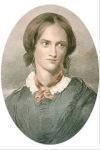 I remember reading a quote by the author Jean Rhys saying something about mad Bertha Rochester being Charlotte Brontë’s symbolic reference for the hidden rage of women. No kidding. The second-class citizen world of Charlotte Brontë was little better for women than Jane Austen’s world twenty-five years before. That sad time of very few rights and no fair representation under the law would have enraged me too. Today’s all too similar political shenanigans enrage me now.
I remember reading a quote by the author Jean Rhys saying something about mad Bertha Rochester being Charlotte Brontë’s symbolic reference for the hidden rage of women. No kidding. The second-class citizen world of Charlotte Brontë was little better for women than Jane Austen’s world twenty-five years before. That sad time of very few rights and no fair representation under the law would have enraged me too. Today’s all too similar political shenanigans enrage me now.
Anyway, before I express my hidden rage…
As part of my 2016 symbol series, I’ll look into symbolism in literature over the next few days. I’ll begin than with Allegory. Etymology: From the Greek, “to speak so as to imply something other.”
Allegory is the representation of abstract ideas or principles where characters and events symbolize the deeper moral or spiritual meanings of human life. Search for a broader definition and you get this:
The representation of abstract ideas or principles by characters, figures, or events in narrative, dramatic, or pictorial form.
A story, picture, or play employing such representation.
A symbolic representation e.g. the blindfolded figure of a woman holding a scale is an allegory of justice.
Raphael Tuck 1866winter, are classic codes to live by.
Allegory has been used in teaching principles for ages. We’ve been treated to allegory from practically day one. What child doesn’t know the story of the Tortoise and the Hare or the Ant and the Grasshopper by Aesop? Conveying that you shouldn’t give up, or it’s better to be prepared are both excellent principles to live by.
One truth always stands in this type of storytelling–an allegory is not meant to be taken literally. You must look for the symbolic reference.
Authors often use this device in their writing to convey a personal statement. I certainly do. If I’d put any more statement into Loving Leonardo, no one would be able to lift the book of the table! I find such thoughts enhance the reading experience. As a reader, when I’m able to draw a deeper meaning from a passage, it always feels like the author wrote it for me. And I like that. You’ll often see this tool in older works. Authors such as Steinbeck, Melville, C. S. Lewis, Swift, and Milton all dabbled in it. Good luck trying to find it in a modern work. If modern allegory is out there, no one is talking. Here are a few of the best-known allegorical works from the past:
The Divine Comedy, an epic poem by Dante is also an allegory to keep on the straight and narrow lest you end up in hell.
The Wizard of Oz, an allegory of the populist movement of the 1890s.
The obvious one The Allegory of the Cave by Ancient Greek philosopher Plato suggests man has a tendency to accept convention without question, even to his detriment.
Lord of the Flies by William Golding. A disturbing abstract on rationality, order, and democracy.
Animal Farm by George Orwell is an equally disturbing abstract on the communist regime of Stalin.
Beyond those books forced upon me in school, I haven’t completely tackled all of the above and probably never will. Heck, I can’t get half-way through any Steinbeck before it makes me cry. I’m more of an informational reader anyway. Give me a set of encyclopedias with an occasional run of historical romance/fiction and a dash of Harry Potter and I’m good.
:D
How many allegorical works have you read? Feel free to share titles in comments.
Tomorrow: a bit more.
♥♥♥♥♥♥♥♥♥♥♥♥♥♥♥♥♥♥♥♥♥♥♥♥♥♥♥♥♥♥♥♥♥♥♥♥♥♥♥♥♥♥♥♥♥
Words Worth M entioning for January
entioning for January
“You can clutch the past so tightly to your chest that it leaves your arms too full to embrace the present.”
~Jan Glidewell
 Today is Author Cindy Spencer Pape’s blog day
Today is Author Cindy Spencer Pape’s blog day
http://romancebooks4us.blogspot.com/
Authors and Industry representatives all month long.
Our January is on! Prizes often include $100 in gift cards for Amazon/B&N, ebooks, print books, audiobooks, additional gift cards, and non-book items. http://www.romancebooks4us.com/





